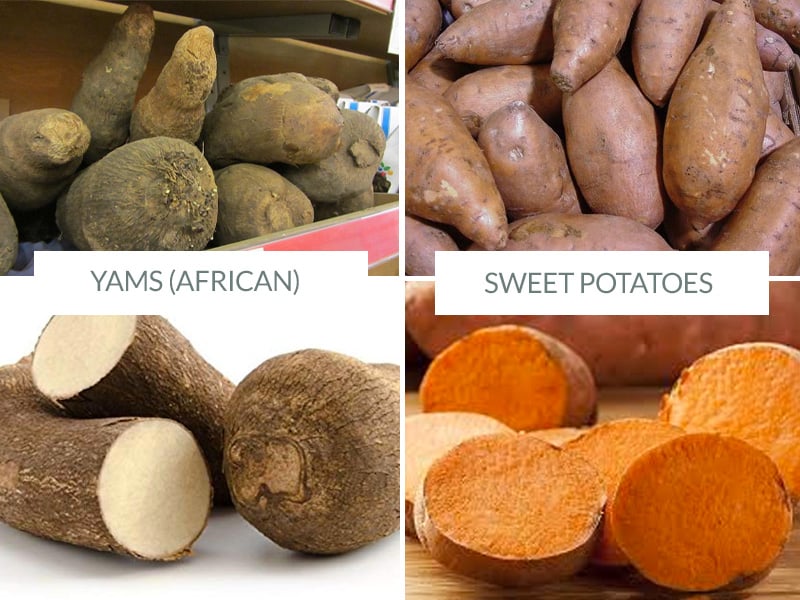What Does a Yam Look Like? Exploring the Appearance and Characteristics of Yams
Yams are nutritious root vegetables commonly used in various cuisines around the world. With their unique taste and versatility, yams have become a popular ingredient in both savory and sweet dishes. In this article, we will delve into the visual characteristics of yams, helping you identify and understand what a yam looks like.

Difference between a sweetpotato and a yam
I. Overview of Yams:
A. Definition and Distinction:
1. Yams are tuberous root vegetables belonging to the Dioscoreaceae family.
2. They are often confused with sweet potatoes, but they are distinct in terms of origin, taste, and appearance.
B. Cultural Significance:
1. Yams are staple foods in many African, Caribbean, and Asian cuisines.
2. They hold cultural significance and are often featured in traditional celebrations and festivals.
II. Physical Appearance of Yams:
A. Size and Shape:
1. Yams come in various sizes, ranging from small to large.
2. They typically have a cylindrical shape, tapering at both ends.
B. Skin Texture and Color:
1. The skin of yams is rough and thick, providing a protective layer.
2. The color of yam skin varies, ranging from pale yellow to dark brown or even purplish hues.
C. Flesh Color and Texture:
1. The flesh of yams is typically off-white or cream-colored.
2. It has a firm and starchy texture, similar to a potato, but it can vary slightly depending on the yam variety.
III. Common Types of Yams:
A. White Yam (Dioscorea rotundata):
1. White yams have a pale yellow skin and a starchy, white flesh.
2. They are commonly found in African and Caribbean cuisines.
B. Yellow Yam (Dioscorea cayenensis):
1. Yellow yams have a brownish-yellow skin and a slightly sweeter flavor compared to white yams.
2. They are popular in Caribbean and Asian cuisines.
C. Chinese Yam (Dioscorea polystachya):
1. Chinese yams have a light brown, rough skin and a creamy white flesh.
2. They are widely used in Chinese and Korean cuisines.
IV. Culinary Uses of Yams:
A. Savory Preparations:
1. Yams can be boiled, roasted, steamed, or fried as a standalone side dish or added to stews, curries, and soups.
2. They absorb flavors well and offer a satisfying, hearty texture in savory dishes.
B. Sweet Treats:
1. Yams can be used in desserts, such as pies, cakes, and puddings.
2. Their natural sweetness and smooth texture add depth to sweet creations.
V. Health Benefits and Nutritional Value:
A. Nutrient-Rich:
1. Yams are a good source of dietary fiber, vitamins, and minerals, including vitamin C, potassium, and manganese.
2. They contribute to a healthy diet and support various bodily functions.
B. Antioxidant Properties:
1. Yams contain antioxidants that help combat oxidative stress and reduce the risk of chronic diseases.
2. These antioxidants also contribute to healthy skin and a strengthened immune system.

Yam and Sweet potatoes
Yams are versatile root vegetables with unique characteristics that set them apart from sweet potatoes. Recognizing the physical appearance of yams, including their size, shape, skin texture, and flesh color, can help you identify them in the market or when selecting ingredients for your recipes. Whether you're incorporating yams into savory dishes or indulging in sweet treats, their distinct flavor and nutritional benefits make them a valuable addition to your culinary repertoire.